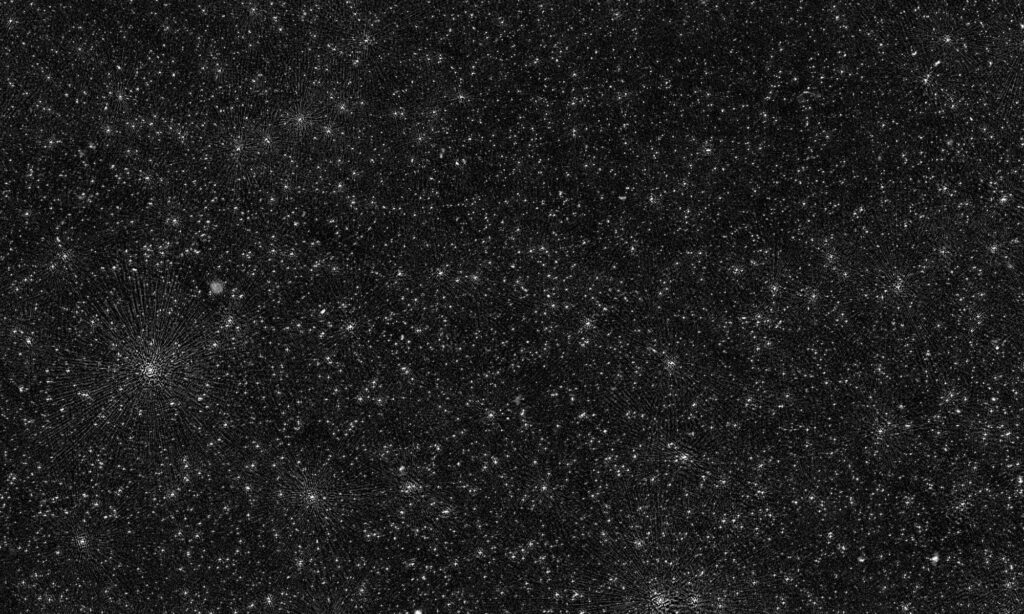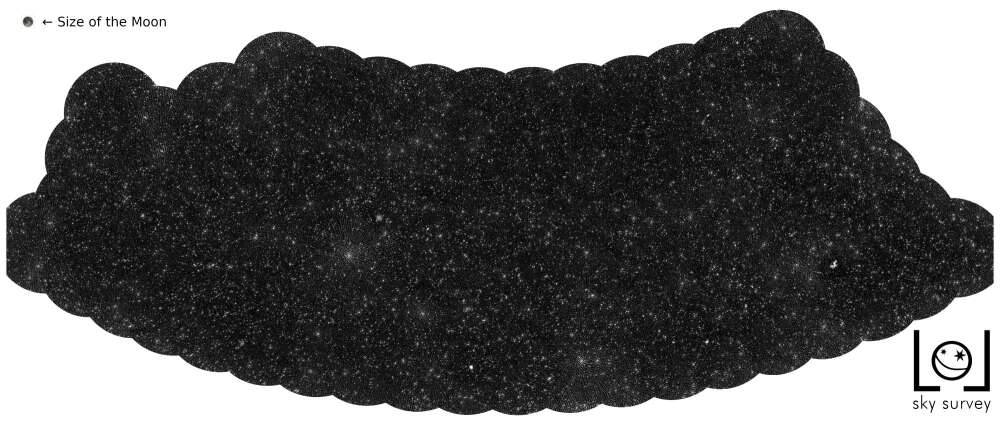The image above may look like a fairly normal picture of the night sky, but what you’re looking at is a lot more special than just glittering stars. Each of those white dots is an active supermassive black hole.
And each of those black holes is devouring material at the heart of a galaxy millions of light-years away – that’s how they could be pinpointed at all.
By combining 256 hours of observations of the northern sky, astronomers have created a map showing 25,000 supermassive black holes. This is the most detailed celestial map in the field of so-called low radio frequencies.
The map covers 4% of the sky in the northern hemisphere. Scientists used supercomputers with new algorithms to create this map, which correct the ionosphere’s effect every four seconds.
The astronomers used 52 stations with LOFAR antennas located across nine European countries, including Leiden astronomers.
Stars or black holes?

The map seems to have several thousand stars, but they are supermassive black holes located in separate, distant galaxies.
Research leader Francesco de Gasperin (formerly Leiden University, now Universität Hamburg, Germany) says about the study: “This results from many years of work on incredibly difficult data. We had to invent new methods to convert the radio signals into images of the sky.”
Co-author Reinout van Weeren (Leiden Observatory) explains, “Observations at long radio wavelengths are complicated by the ionosphere that surrounds the Earth. This layer of free electrons acts like a cloudy lens that constantly moves across the radio telescope. It’s similar to when you try to see the world while immersed in a swimming pool. When you look up, the waves on the water of the pool deflect the light rays and distort the view.”

Along with supermassive black holes, the map offers a window to the universe‘s large-scale structure, among other things.
The study is published in Astronomy & Astrophysics.





I have always believed our Sun is a blackhole (dark sucker theory) feeding off all matter within, including dark matter itself. With heat and light being a byproduct or exhaust of the intense friction of concentrated mass. Thus being the energy that sustains the orbit of our planets . Like water down a drain, planets too buoyant to be consumed. Just a theory ,being taught that much of what we believe as facts are simply theories. To me, its a theory with much plausibility. I’m grateful to have learned to look at things differently. Light heartedly I have many more. New discoveries as such resonate with me.